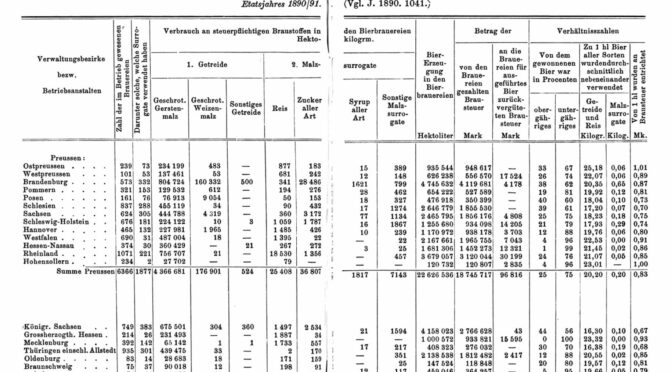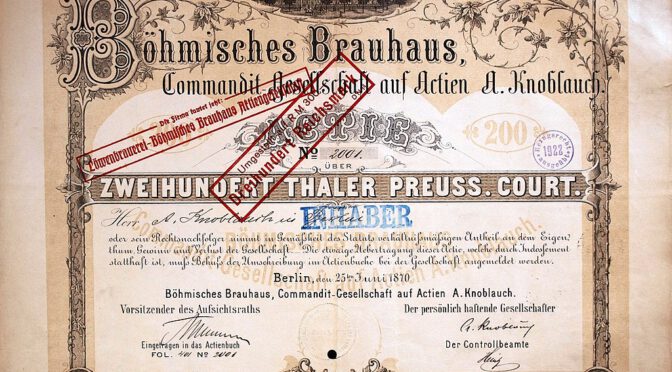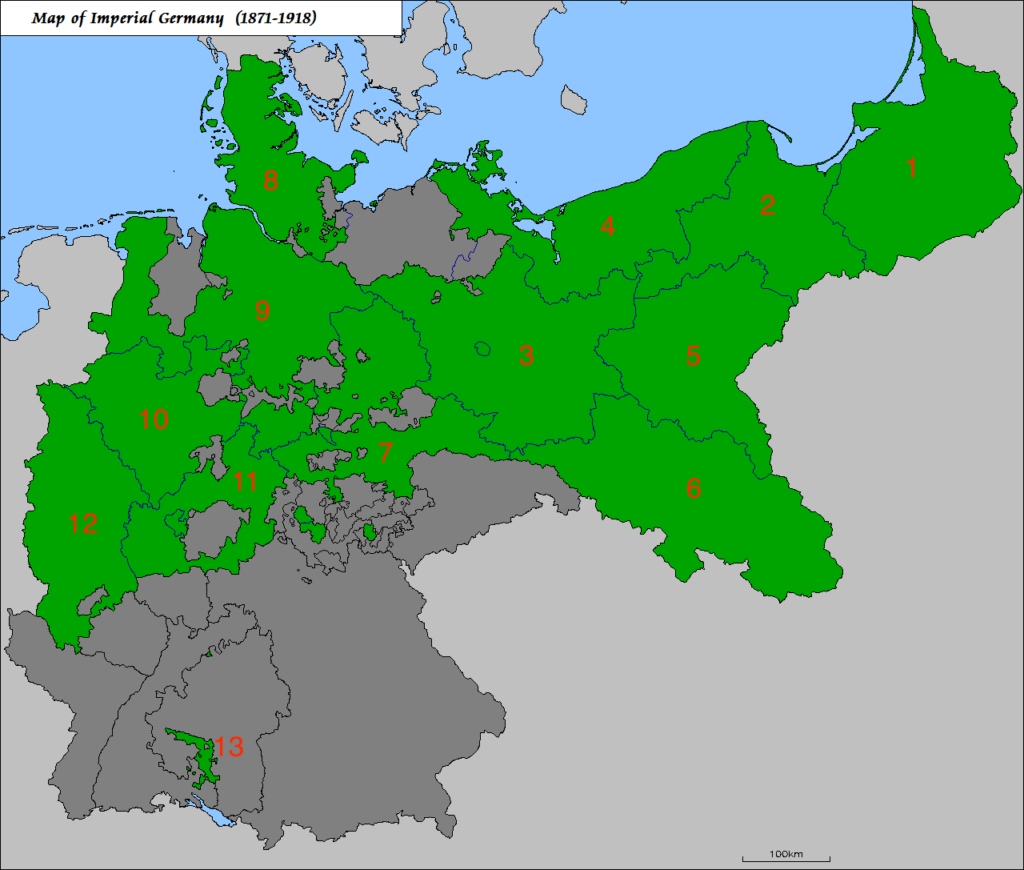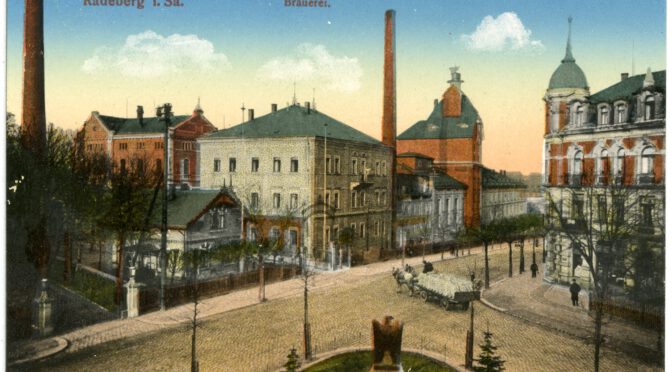Alcohol-free beers are a hot topic these days, both because of consumer demand and improvements in quality of this beer achieved through research.
When recently talking about the subject with my friend Ben, I brought up Aubi, the East-German “Autofahrerbier” (lit. “motorist’s beer”). When looking into the topic of Aubi more closely, I found out more about its history that I’d like to share here.
First the plain facts: in the GDR, beer brewing was guided by TGL 7764, an industry standard that defined which beer types could be brewed, how they could be brewed, which ingredients could be used for them, and under which parameters each of these types had to fall. In short, it was an early form of a beer style guideline, but specifically for the East-German brewing industry.
In the 1980 revision of TGL 7764, Aubi was listed as the only alcohol-free type of beer. In its production, at most 11 kg of brewing malt per hectolitre of sellable beer could be used, and at most 9 g of hop bittering compounds (i.e. alpha acid) per hectolitre. At most 70% of hop bittering compounds could be from hop extracts. It had to be matured for at least 3 days, with a recommended time of 6 days. Its original gravity was between 6.9 and 7.4 °P, its apparent attenuation 30 to 40%, its CO2 content at least 0.38% (i.e. 3.8g/l), and its bitterness 22 to 34 IBU. In terms of colour, it had to be about as pale as pale lager beer (I can’t translate the GDR colour scales to modern ones like SRM or EBC). In bottles, it had to last at least 90 days, the longest best-before dating of all beer types (together with the Pilsner Spezial type). And unlike most other GDR beer types, it had no specific beer label colour prescribed.
The development of the beer itself was a relatively surprising one: at the time, brewmaster Ulrich Wappler at VEB Engelhardt brewery in Berlin had an unexpected surplus capacity, as the Schultheiss brewery on Schönhauser Allee in Berlin was shut down and Wappler’s technicians managed to transfer tanks to his own brewery. In East Germany, the blood alcohol limit was at 0.0 since 1956, much stricter than other Western countries at the time. Truck drivers coming in from West Germany would bring their own, specifically Birell, a Swiss brand developed and brewed at Hürlimann, and at the time (as far as I could find out) the only alcohol-free beer on the German market (Clausthaler, the later dominant alcohol-free beer brand in West Germany, only launched in 1979). Birell was even specifically advertised near the border on the West-German side with the fact of the strict alcohol ban for drivers in East Germany.
The brewmasters in East Berlin were approached whether they would be able to develop a GDR-brewed alcohol-free beer. With the free capacity, Wappler would have been able to do it and agreed to it. His problem was rather finding a way how to brew an alcohol-free beer. In the GDR, he unfortunately had no access to Western brewing literature, nor any of the Western patents, and he wasn’t allowed to get in touch with West-German brewers either as he wasn’t a party member and his brothers had left the GDR for the West. He eventually managed to get access to Western patents through a source, and studied them for 6 months. Of the two methods of producing alcohol-free beer (biological, i.e. restricted fermentation, and mechanical, i.e. physical dealcoholisation), they decided that they could build the equipment to brew using restricted fermentation.
This was still not without problems: they did not have any special yeast, so a special apparatus to quickly chill down the beer that had only just started fermenting had to be built. Then higher-ups had heard about the efforts and the supposed progress, and basically forced them to send out unfinished beer that had not fully matured, which was actually well-received.
An area where this new beer was particularly successful were the heavy industries, in particular glass blowers and steel mills. In these jobs, workers were of the opinion that they needed to drink beer to help with salivating. They refused to just drink water, while at the same time, the union had strictly banned alcohol. So they tested the alcohol-free beer (at less than 0.5% ABV) in some of these factories, and the workers liked it. Also price-wise, at 75 Pfennig per bottle it was cheaper to buy than imported Birell, and also cheaper than other domestic beers. So their alcohol-free beer filled a gap, even more so in the heavy industries than for motorists. It took some tweaking of the recipe, including hop oils, to make it a really good beer, and in the end, the product also piqued the interest of other countries of the Eastern Bloc like Bulgaria and Czechoslovakia, who also tried to brew similar beer but all had over 1% ABV and none of them tasted nice.
The cheap domestic price of just 75 Pfennig also became a problem in terms of economics: while it required fewer ingredients, brewing Aubi was much more energy-intense, because mashing involved a special mashing schedule (more on that later) and restricted fermentation required more energy on top of that for chilling down the beer. Because of this, production volumes were lowered.
The beer itself was brewing like this: the grist contained 20 to 50% (sic!) unmalted adjuncts and was mashed using a special type of decoction mashing that specifically skipped the optimal temperatures of beta amylase and rather inactivated them to then have alpha amylase saccharify the starches, resulting in a much less fermentable wort. After only briefly starting fermentation, the wort was chilled down quickly to restrict fermentation.
Internationally, the East German alcohol-free beer was also a success, and was exported from 1986 to the United States under the brand name “Foxy light”. If we can believe a tasting and ranking of alcohol-free beers in the Chicago Tribune from 1988, Foxy light couldn’t exactly compete in terms of flavour with other European imported alcohol-free beers at the time, but fared well compared to domestic alcohol-free beers, while also being one of the cheapest ones. In England, the same beer was sold under the brand “Berolina”.
With the end of the GDR, production of Aubi also ceased. Most East-German breweries were shut down as they were completely outdated compared to their West German counterparts. Brewmaster Wappler managed to get work in West Berlin breweries for his workers. Until his retirement, he helped conceptualising brew systems for other breweries and training people on them.
Sources:




